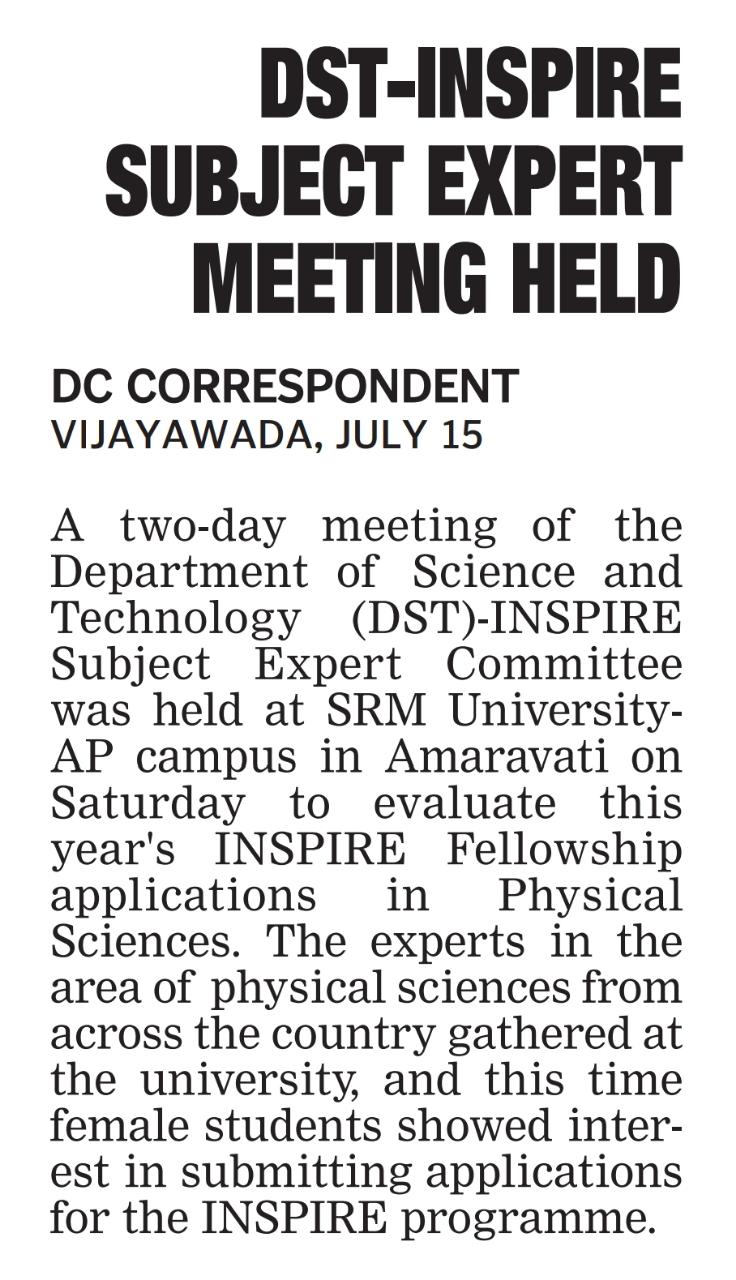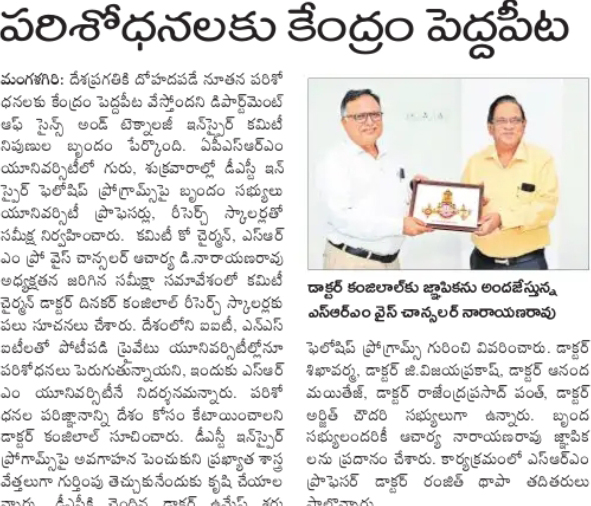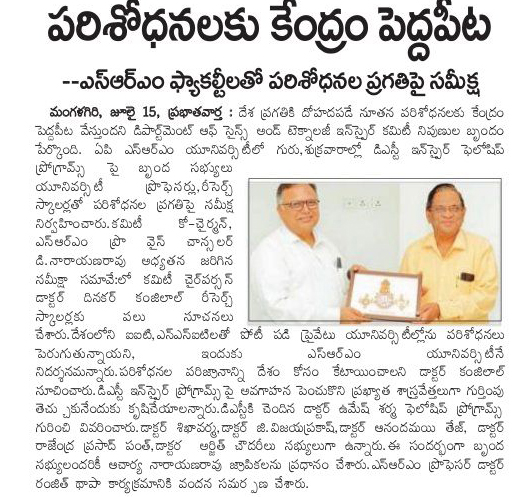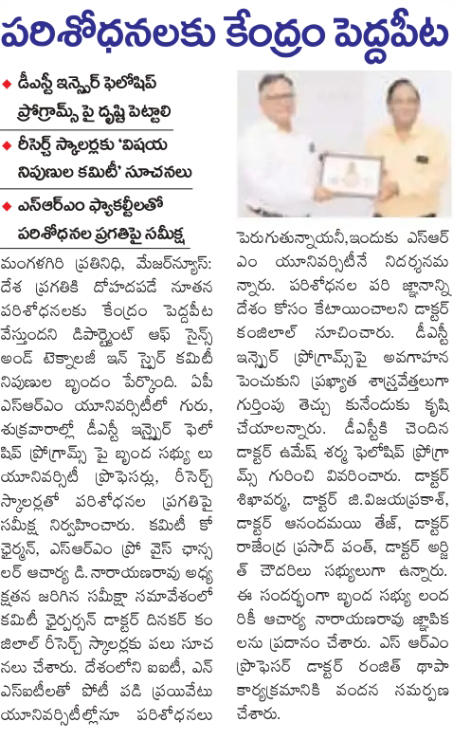All Management Events
- Combining intelligent systems for social good August 5, 2022
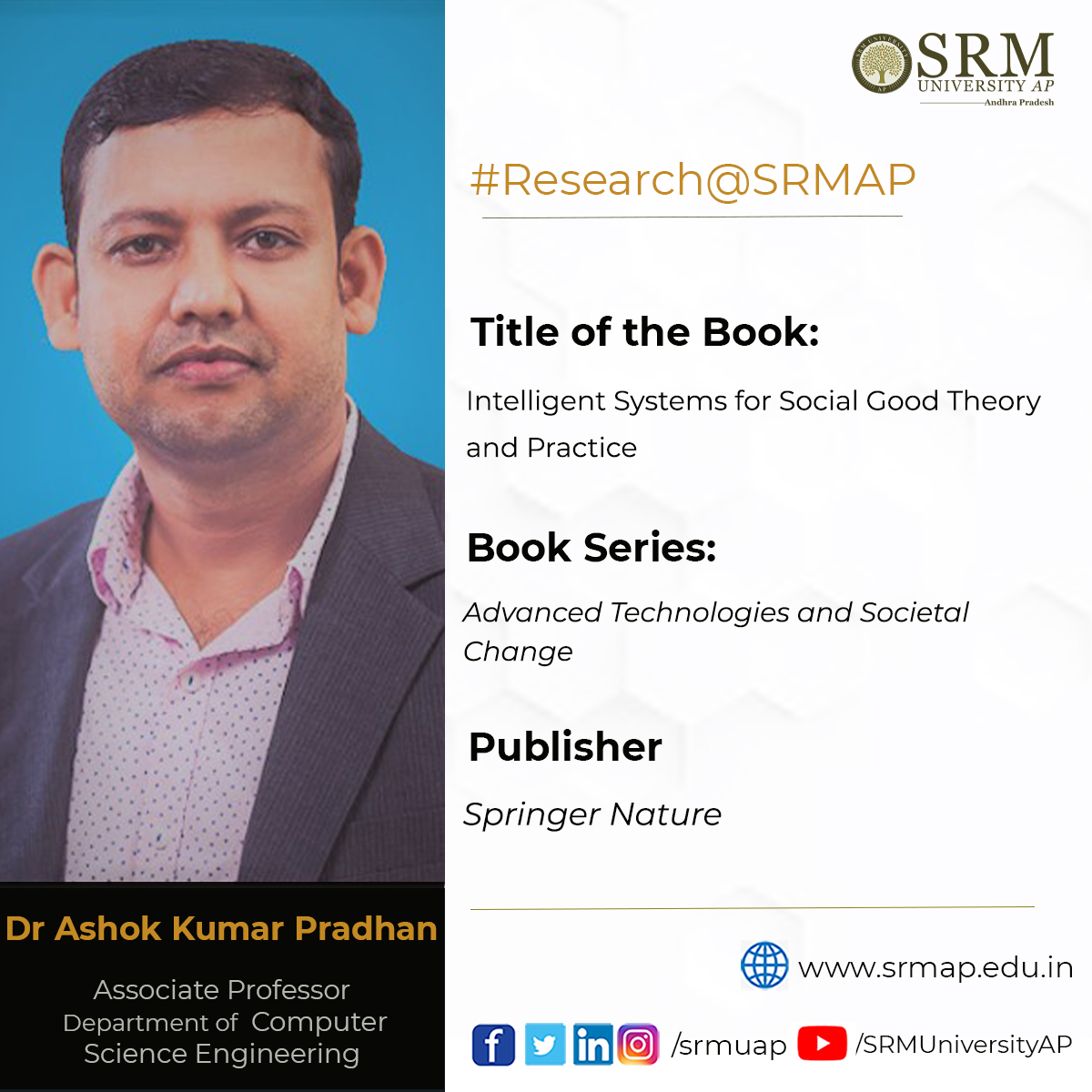 Merging the calibre of two well-fledged technologies will massively impact the momentum of social life. Decoding the possible links between promising technologies would employ solutions to various societal issues. Dr Ashok Kumar Pradhan, Associate Professor of the Department of Computer Science and Engineering, gave life to this thought by publishing a book titled Intelligent Systems for Social Good Theory and Practice. He published this work as an editor in a book series named Advanced Technologies and Social Change by Springer Nature.
Merging the calibre of two well-fledged technologies will massively impact the momentum of social life. Decoding the possible links between promising technologies would employ solutions to various societal issues. Dr Ashok Kumar Pradhan, Associate Professor of the Department of Computer Science and Engineering, gave life to this thought by publishing a book titled Intelligent Systems for Social Good Theory and Practice. He published this work as an editor in a book series named Advanced Technologies and Social Change by Springer Nature.The book highlights the connection between the two technologies: Artificial intelligence (AI) and the Internet of Things (IoT). It shows the better impact of the relation between these technologies in society, using real-world examples. Each chapter in the book proposes novel solutions to societal problems along with the challenges in the application of AI and IoT to solve them. The adverse attacks on Machine Learning models and how to protect sensitive data over the IoT network are discussed in the book.
The book is significant to Dr Ashok Kumar Pradhan as applying the two technologies mentioned helps resolve various social problems related to healthcare, agriculture, green environment, renewable energies, smart cities, etc.
Shyamapada Mukherjee and Naresh Babu Muppalaneni from NIT Silchar and Sukriti Bhattacharya from Luxembourg Institute of Science and Technology, Belvaux, have worked together with Dr Ashok for this work. The book’s target audience is undergraduate, master’s, and doctoral students from Science and Engineering backgrounds.
- SRM-AP, AIIMS share health care research of mutual interest August 4, 2022
The-Hans-India – July 22
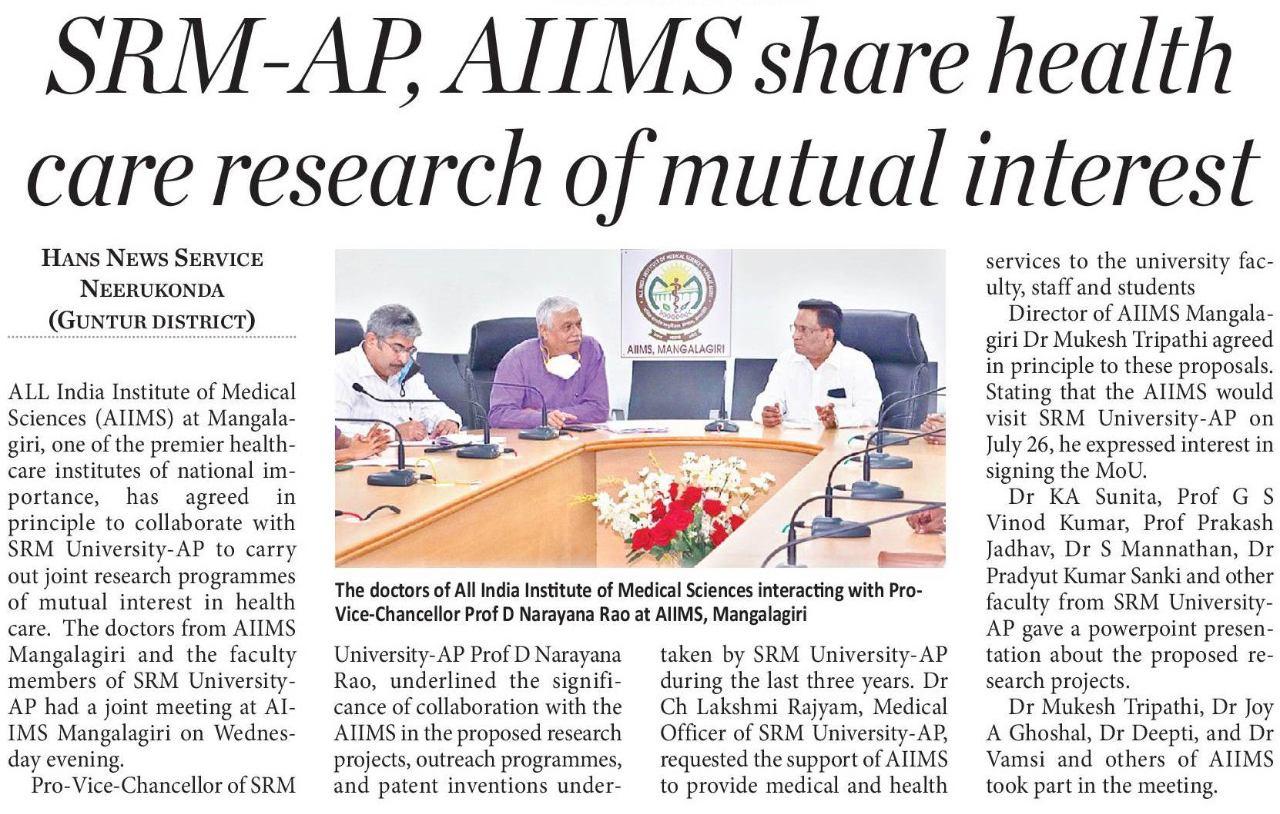
Prabha – July 27
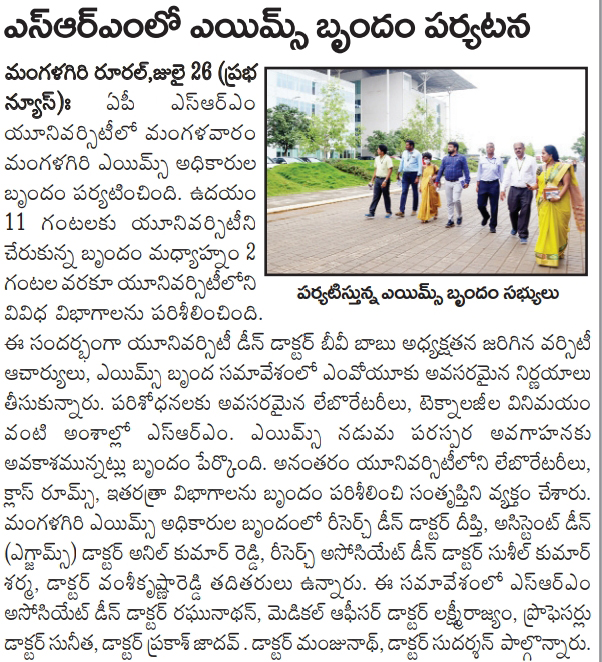
Prajashakti – July 27
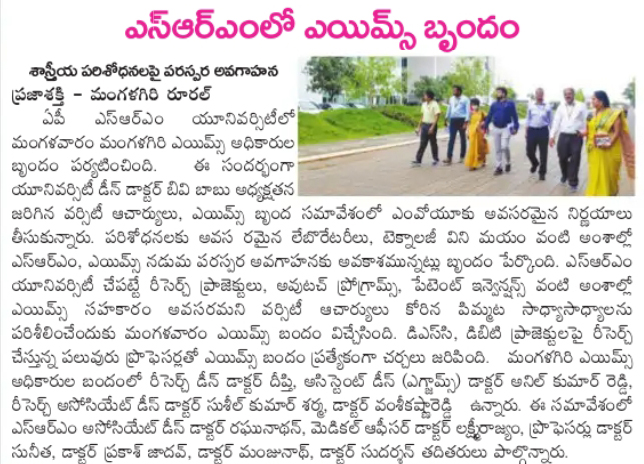
Sakshi – July 27
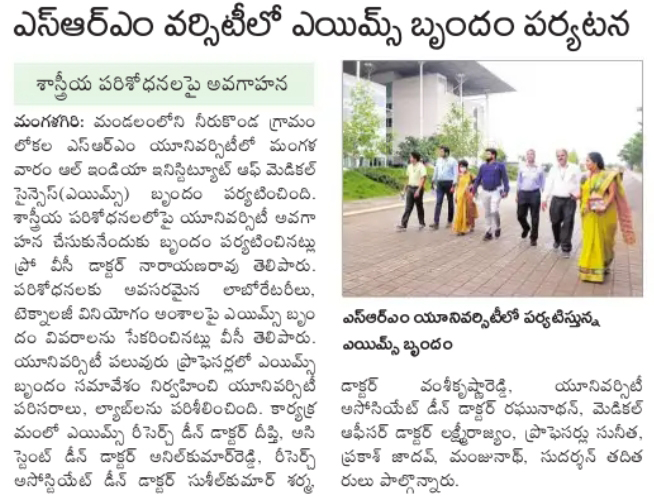
Surya – July 27
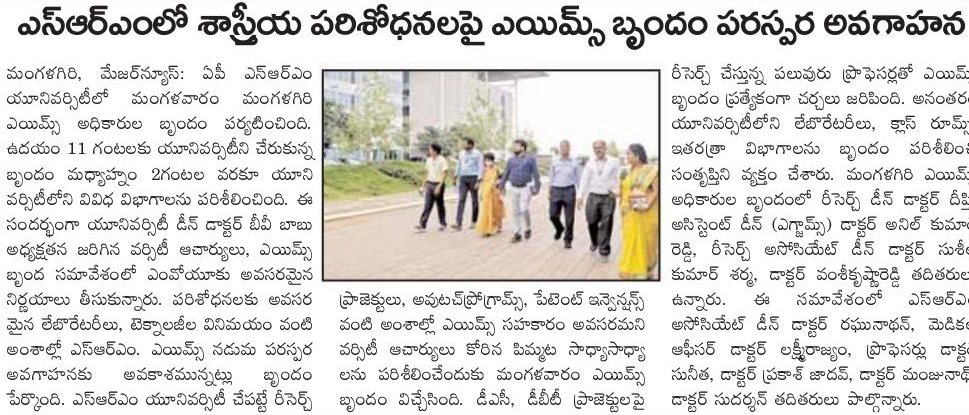
Vaartha – July 27
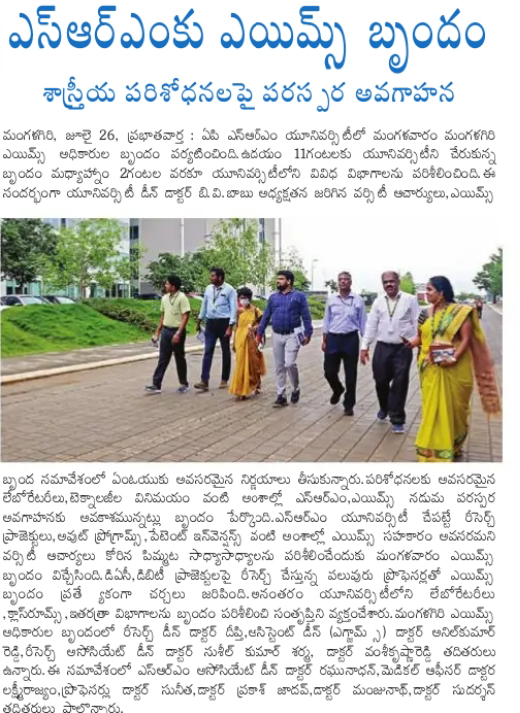
Varthaprapancham – July 22
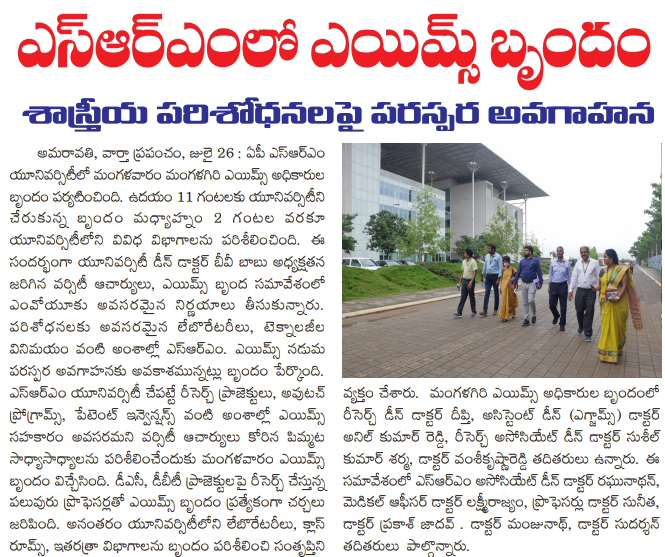
Visalandra – July 27
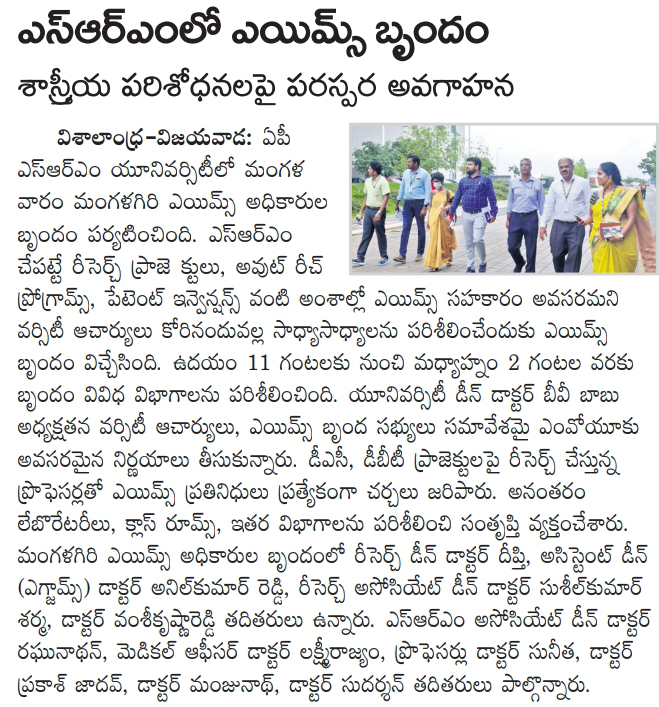
Visalandra – July 22
Continue reading →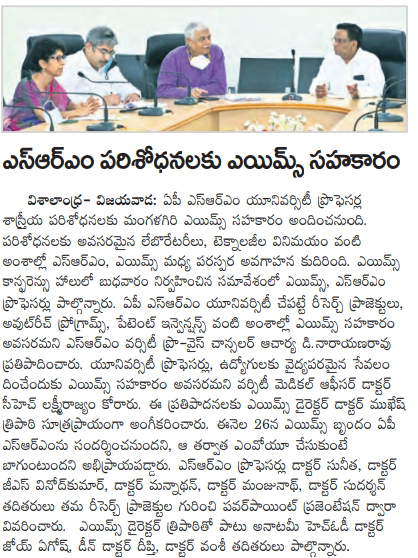
- DST-Inspire Subject Expert Meeting Held August 4, 2022
- Dr Ghanshyam Kumar Pandey to join the Editorial Board of SN Business and Economics August 4, 2022
SN Business and Economics is a multidisciplinary journal that covers the areas of Economics, Finance, Business, and Management. Springer publishes the journal. It is supported by a team of experienced in-house editors and an international Editorial board. Recently, Assistant Professor Dr Ghanshyam Kumar Pandey from the Department of Economics was appointed as a member of the editorial board of SN Business and Economics.
He is responsible for providing feedback on an ad hoc basis to the in-house editors. He is in charge of verifying submitted papers’ suitability for external review. All SN Business and Economics editors work together to ensure that the submitted research is expertly handled. The team assesses and confirms the paper to be technically sound, academically valid, and ultimately suitable for publication.
Dr Ghanshyam Kumar Pandey will be the handling Editor for up to 3 papers per quarter. This involves nominating academic referees and making an editorial recommendation following peer review. When requested, he shall give the editorial policy or strategy feedback to the Editorial team. Initially, his tenure will last for one year.
Continue reading → - Edu Minister lays stone for SRM infra development August 4, 2022
The-Hindu – July 19
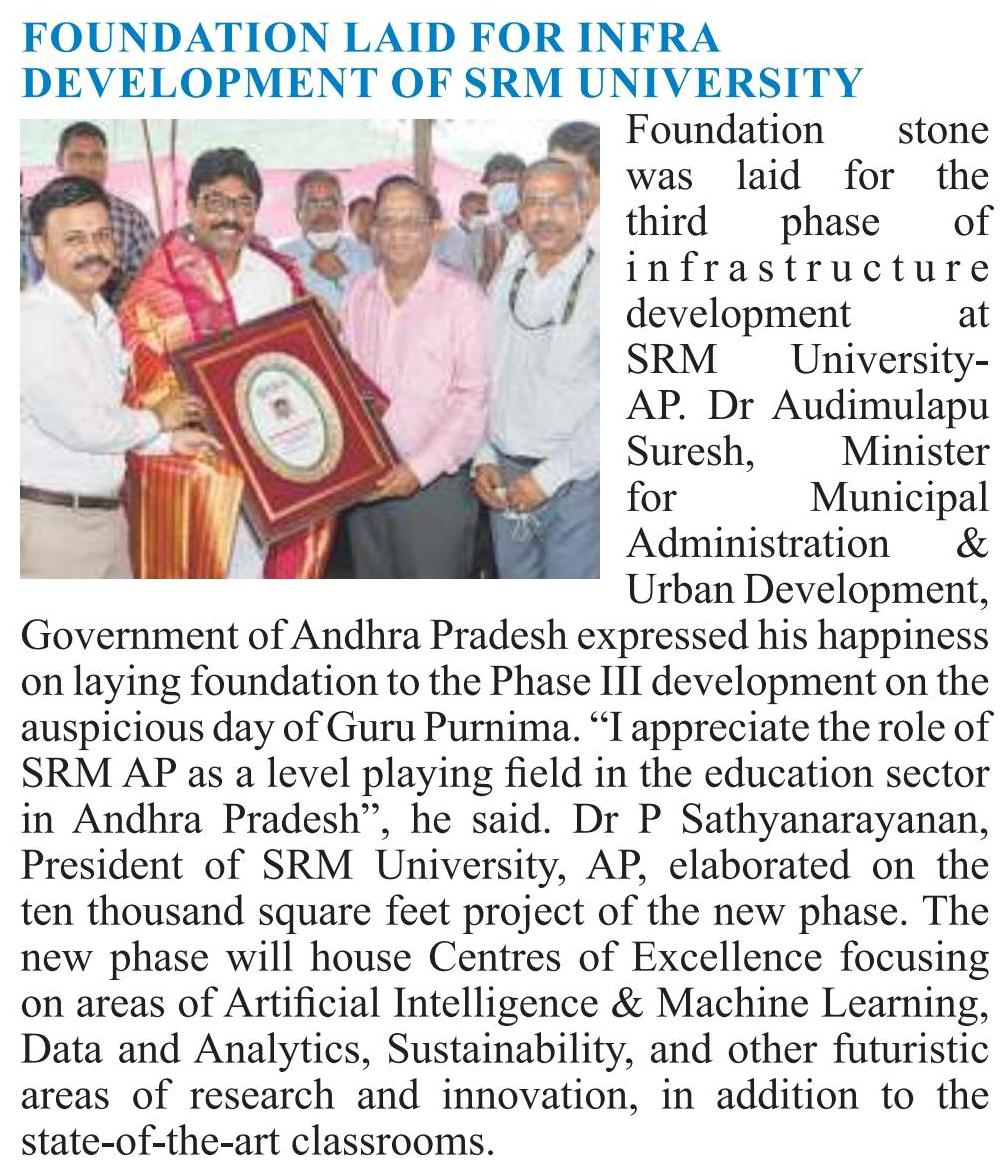
New-Indian-Express – July 16
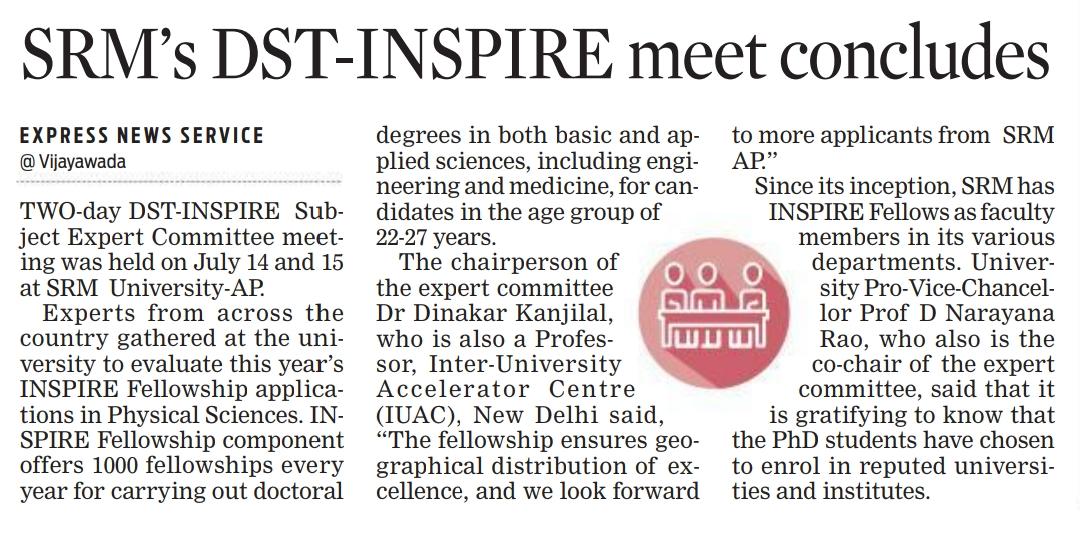
Deccan-Chronicle – July 14
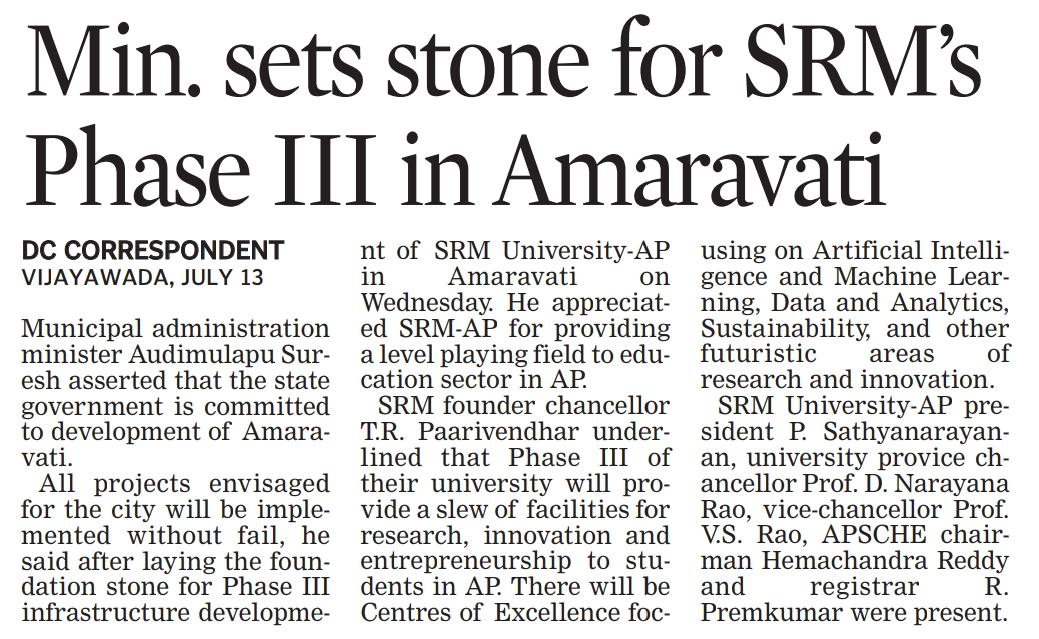
New-Indian-Express – July 14
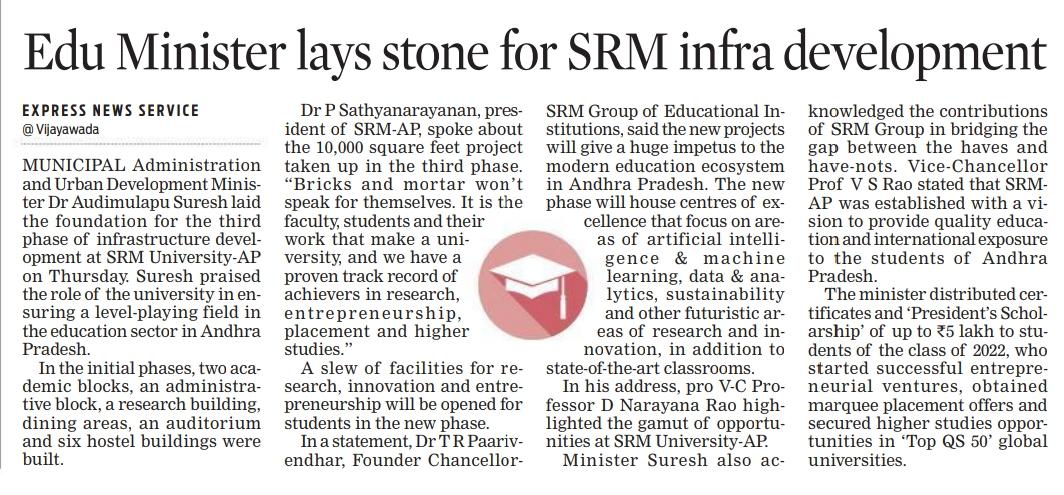
The-Hans-India – July 14
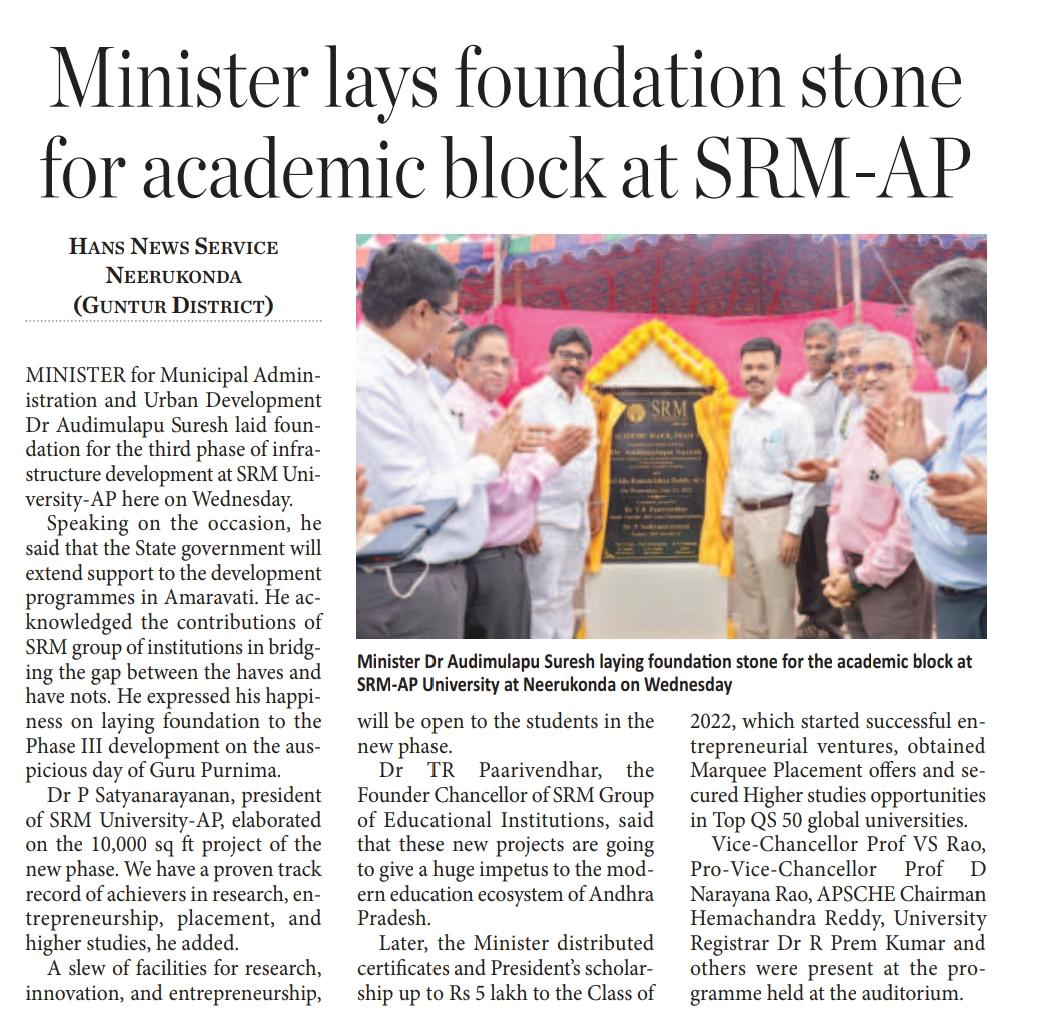
The-Hindu – July 14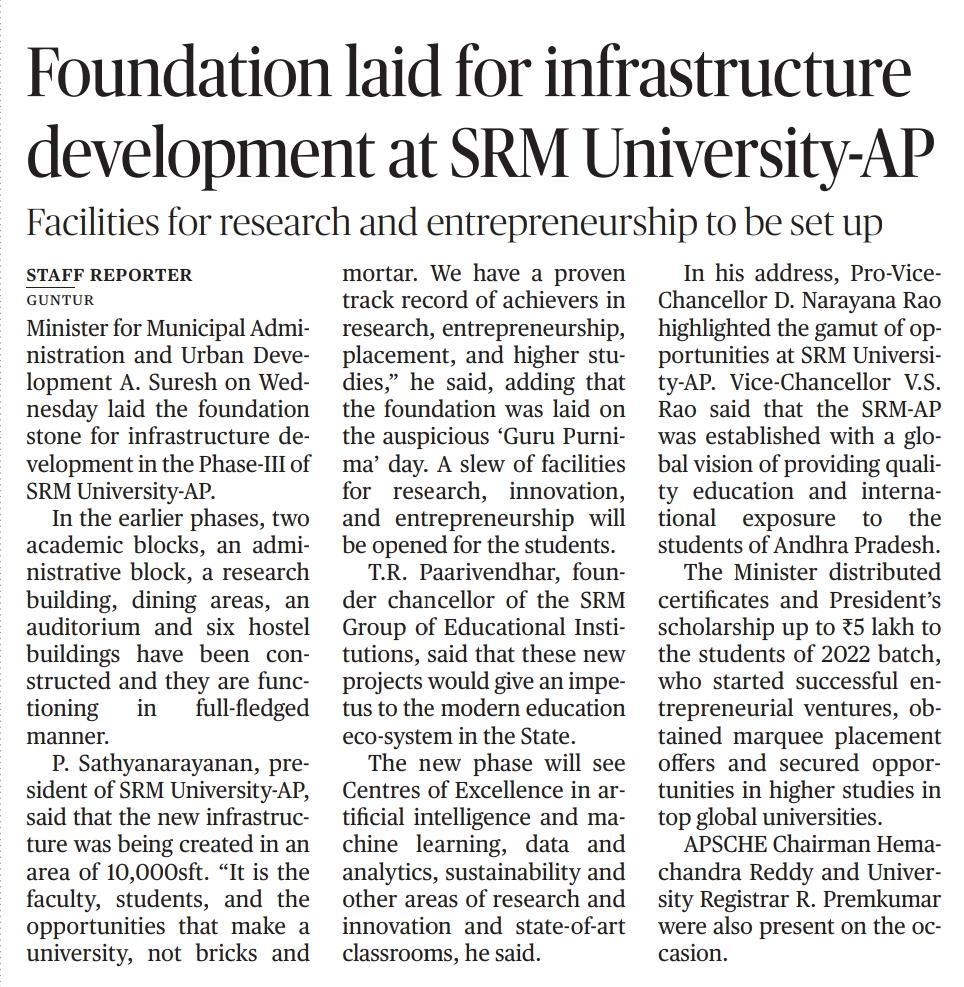
The-Pioneer – July 14
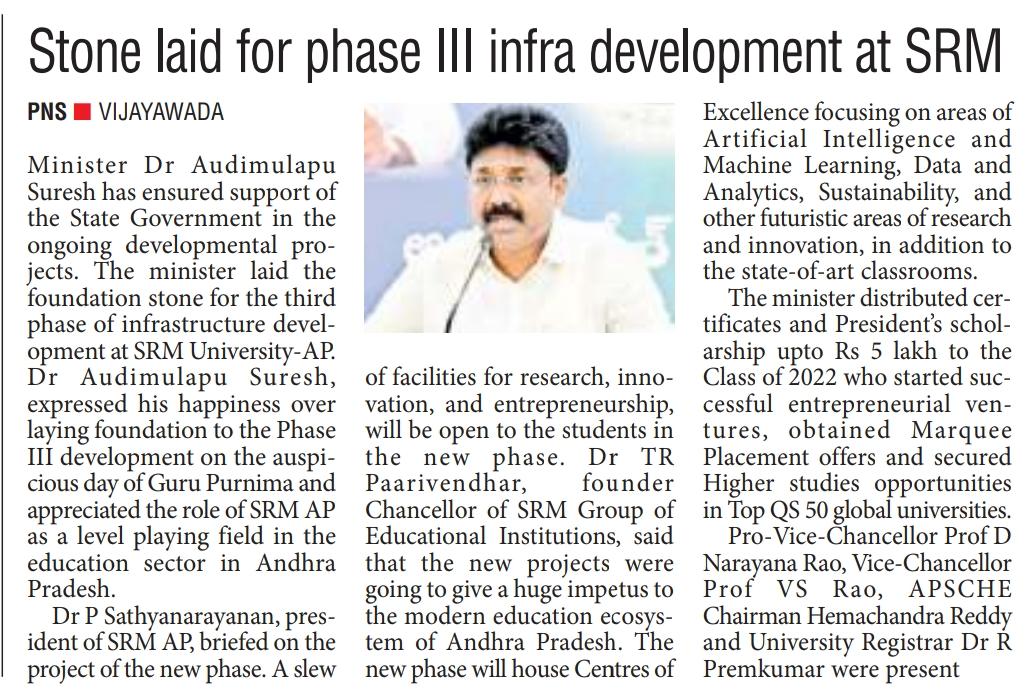
Andrajyoti – July 14
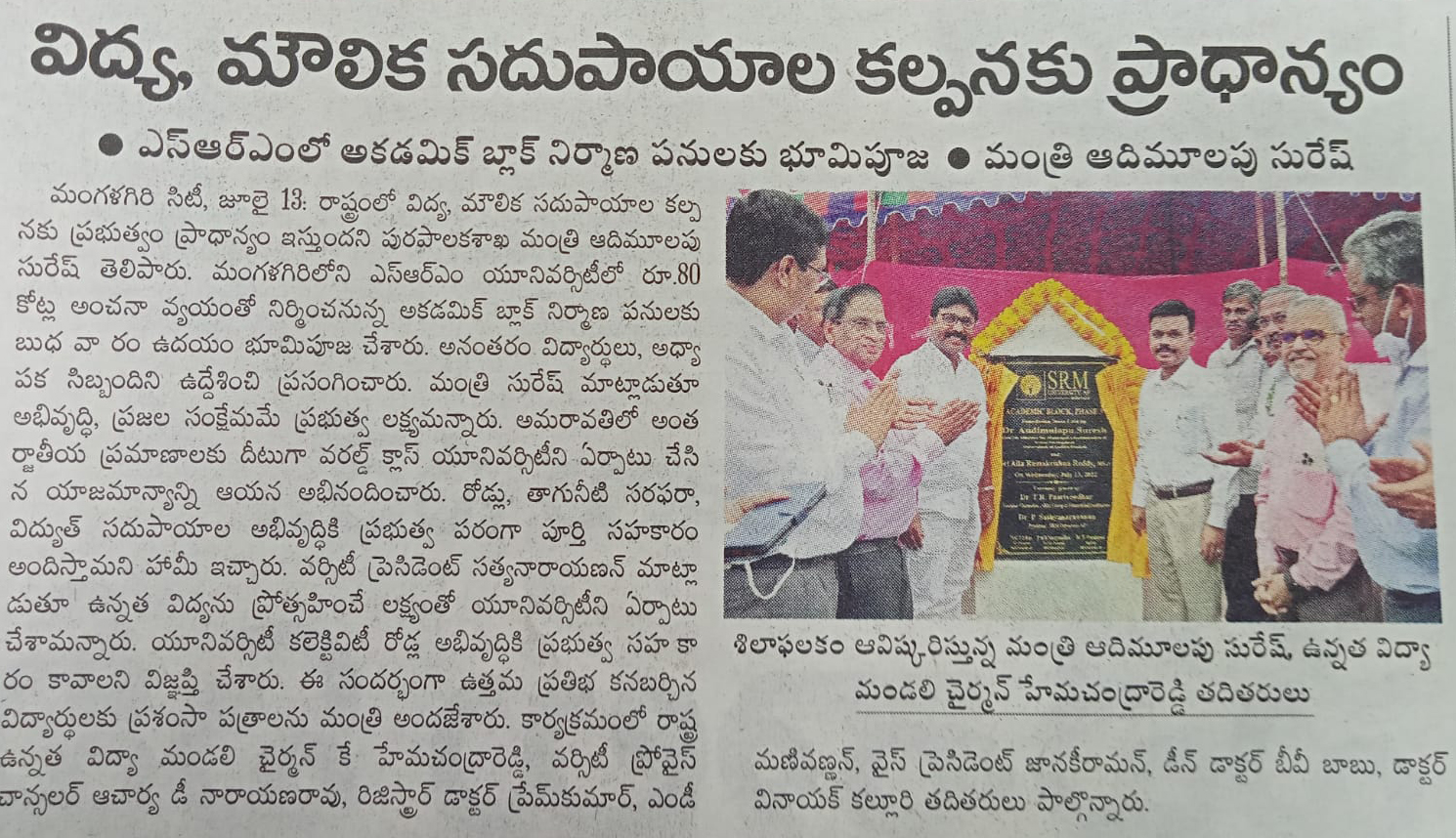
Prabha – July 14
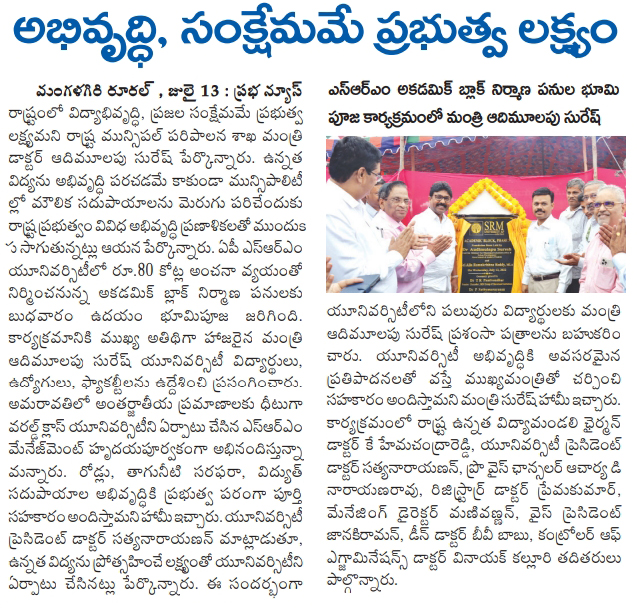
Prajasakti – July 14
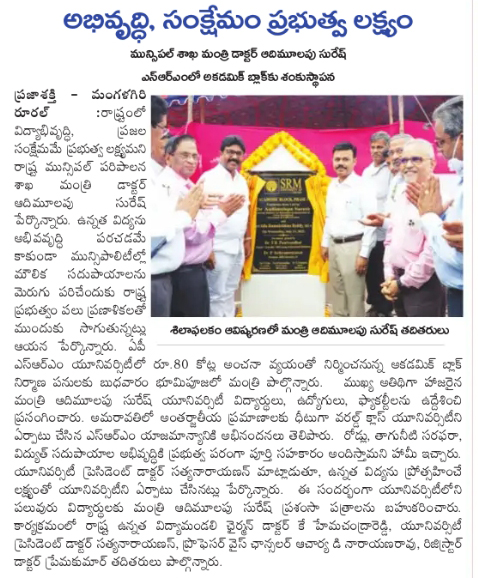
Arthparkash – July 14
Continue reading →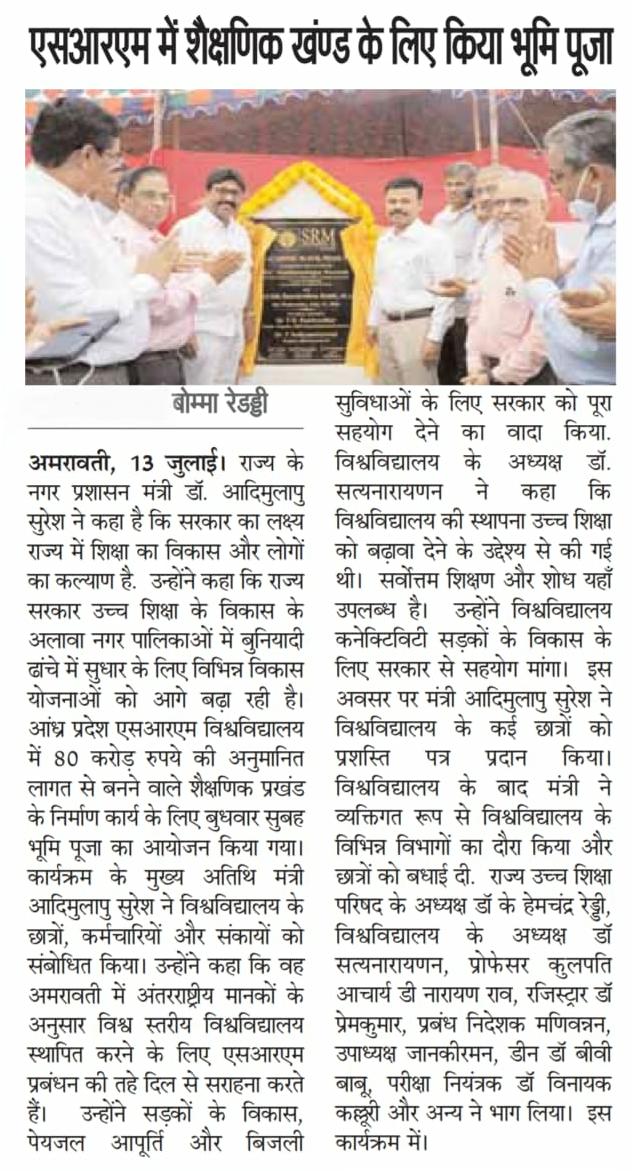
- Dr Elakkiya E August 2, 2022
- Ranked among the Best Young universities in India August 2, 2022
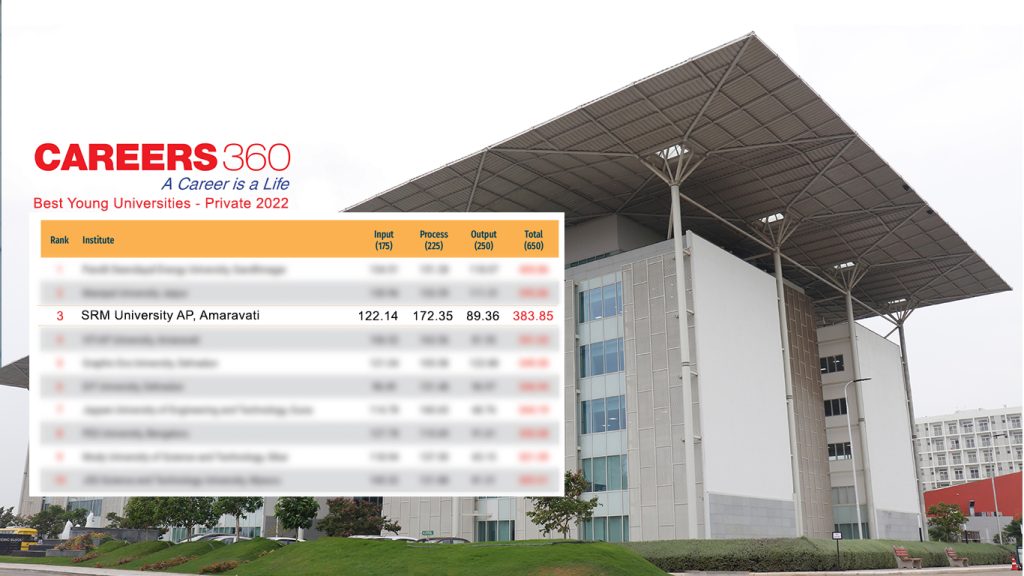
Ranked first among the Top Promising Engineering Universities in India, SRM University-AP is a multi-stream research-intensive global university in Andhra Pradesh. The university believes in the power of transformative education. Therefore, the interdisciplinary research-oriented undergraduate, postgraduate, and doctoral programmes at SRM AP ensure global exposure, entrepreneurial experience, and employability edge for students. The university offers various engineering, sciences, liberal arts, and management programmes through its 18 departments spread across three schools. Students learn the subjects they are passionate about, gain independence, enjoy adventures and meet world-class faculty who challenge them to do things they never imagined! SRM AP nurtures a thriving intellectual community prepared for a dynamic world.
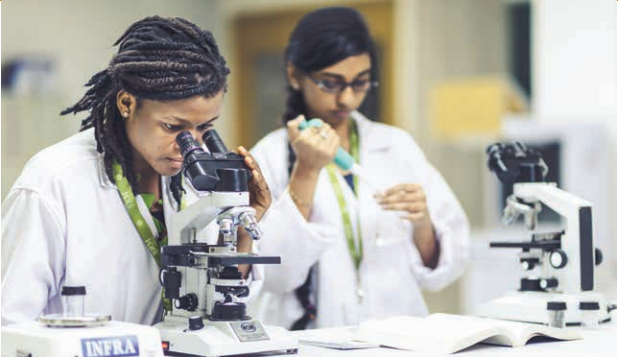 As a premier educational institution, SRM University-AP is unique with the ‘Inter-Disciplinary Experiential Active Learning’ (IDEAL) curriculum, ‘Undergraduate Research Opportunities Project’ (UROP), Capstone Projects, rigorous training on coding and other skillsets; and international language training. The curriculum is designed to incubate various managerial qualities, including teamwork, independent working abilities and versatility. Given the latest trends and industry demands, SRM University- AP’s pedagogical system is designed in partnership with MITx and has evolved to meet the changing needs of education. One of the core strengths of SRM AP’s pedagogy is industry alignment. Co-curricular activities-based clubs like SAE Club, App Design and Development Club, Coding Club, Hackathon Club, and & Student Chapters like ASCE Student Chapter, ACM Women’s Chapter, IEEE Student Chapter, etc. focus on the development of analytical and problem-solving skills and knowledge assimilation through technology-enabled case studies and industry interactions.
As a premier educational institution, SRM University-AP is unique with the ‘Inter-Disciplinary Experiential Active Learning’ (IDEAL) curriculum, ‘Undergraduate Research Opportunities Project’ (UROP), Capstone Projects, rigorous training on coding and other skillsets; and international language training. The curriculum is designed to incubate various managerial qualities, including teamwork, independent working abilities and versatility. Given the latest trends and industry demands, SRM University- AP’s pedagogical system is designed in partnership with MITx and has evolved to meet the changing needs of education. One of the core strengths of SRM AP’s pedagogy is industry alignment. Co-curricular activities-based clubs like SAE Club, App Design and Development Club, Coding Club, Hackathon Club, and & Student Chapters like ASCE Student Chapter, ACM Women’s Chapter, IEEE Student Chapter, etc. focus on the development of analytical and problem-solving skills and knowledge assimilation through technology-enabled case studies and industry interactions.The employment and remuneration potential of degree programmes at SRM AP is unrivalled. Additionally, the Directorate of Corporate Relations and Career Services at SRM University-AP is dedicated to conducting rigorous professional development programmes. As a result, the brilliant maiden batch of SRM University-AP secured 100% placement and international offers up to 50 LPA in 2021. The drive for the Class of 2022 is going on with lucrative Marquee, Dream, Super Dream and international offers. The prominent 600 recruiters include Amazon, Microsoft, Bank of America, Standard Chartered Bank, Infosys, Barclays, and TCS, to name a few. Earn While You Learn (EWL) Programmes, training on coding skills and Japanese language, career counselling sessions, intensive corporate training modules etc., are some highlights that raise job-ready graduates from SRM AP. International internship opportunities from the USA, Italy, Poland, Europe, and Germany acquaint our students with leading enterprises and industry giants across the globe. These have enabled the students to secure placements on both global and domestic fronts.
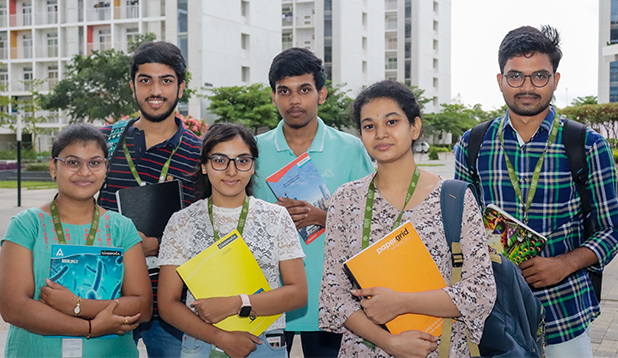 Cutting-edge research of ₹24.06 crores outlay that benefits society betides in SRM University-AP. Doctoral scholars and faculty members received national and international fellowships, SERB grants, and prestigious research/consultancy projects last year. Consequently, 800+ research papers by students and faculty members are published in high-impact Scopus indexed journals. The university has filed/published/obtained 49 patents and 54 ongoing research projects. In addition, our brilliant students have received prestigious research scholarships, presented papers at international conferences and attained opportunities to do research internships at notable institutions such as Harvard Medical School. The students have developed nature-friendly e-bike and face shields with biodegradable elements and received copyright from the Indian Patent Office. SRM – Amara Raja Centre for Energy Storage Devices and Centre for Pioneering Studies in Gold and Silver are two Centres of Excellence with industry collaborations. The faculty members and research scholars partner with top names like Jawaharlal Nehru Centre for Advanced Scientific Research, Bangalore; IIT Madras, Chennai; The University of Newcastle, Australia, among twenty others.
Cutting-edge research of ₹24.06 crores outlay that benefits society betides in SRM University-AP. Doctoral scholars and faculty members received national and international fellowships, SERB grants, and prestigious research/consultancy projects last year. Consequently, 800+ research papers by students and faculty members are published in high-impact Scopus indexed journals. The university has filed/published/obtained 49 patents and 54 ongoing research projects. In addition, our brilliant students have received prestigious research scholarships, presented papers at international conferences and attained opportunities to do research internships at notable institutions such as Harvard Medical School. The students have developed nature-friendly e-bike and face shields with biodegradable elements and received copyright from the Indian Patent Office. SRM – Amara Raja Centre for Energy Storage Devices and Centre for Pioneering Studies in Gold and Silver are two Centres of Excellence with industry collaborations. The faculty members and research scholars partner with top names like Jawaharlal Nehru Centre for Advanced Scientific Research, Bangalore; IIT Madras, Chennai; The University of Newcastle, Australia, among twenty others.The Innovation, Design and Entrepreneurship Academy (IDEA) of SRM University-AP facilitates the incubation of successful student startups. 10,000+ sqft, state-of-the-art incubator space and Seed Funding are provided to every eligible student venture. 40+ student startups, 200+ industry mentors, and $120,000 angel investment are peculiar to the conducive entrepreneurial environment of SRM University-AP. Y Combinator has invested an additional amount of $50,0000 in the alumni entrepreneurial venture Oureye.ai. The university further promotes student-run labs such as Next-Tech Lab and Ennovab, where students share their ideas to curate those into applications that benefit society.
Continue reading → - Dr Md Faiz Ahmad August 2, 2022
- Exploring the charge transport across protein-based molecular junctions August 2, 2022
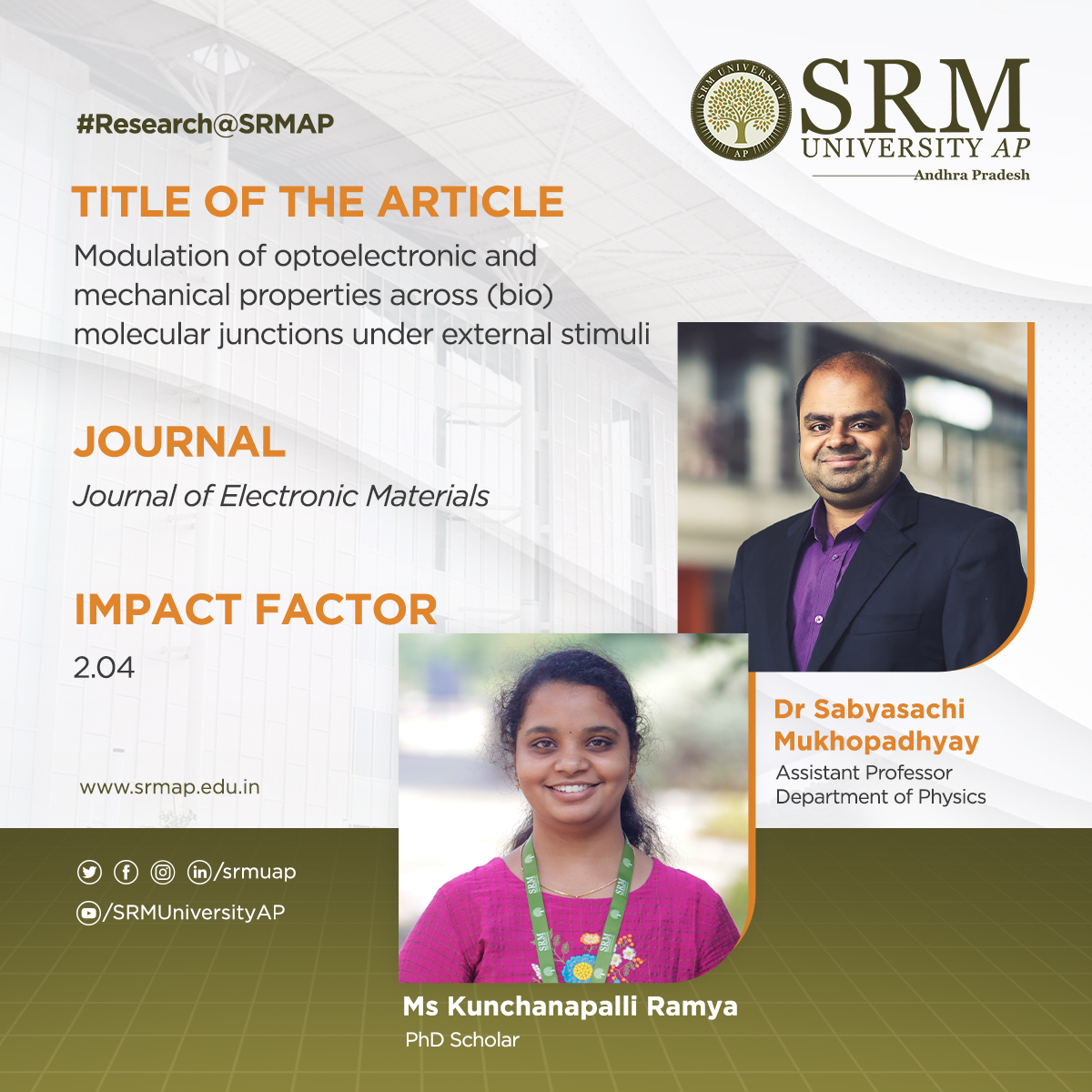 The latest research at the Department of Physics is investigating the charge transport across protein-based molecular junctions. Researchers envision fabricating bio- FETs which is useful in electronic devices as an alternative to Si- technology. Assistant Professor Dr Sabyasachi Mukhopadhyay and his PhD scholar Kunchanapalli Ramya published their paper Modulation of optoelectronic and mechanical properties across (bio) molecular junctions under external stimuli in the journal of Electronic Materials with an impact factor 2.04.
The latest research at the Department of Physics is investigating the charge transport across protein-based molecular junctions. Researchers envision fabricating bio- FETs which is useful in electronic devices as an alternative to Si- technology. Assistant Professor Dr Sabyasachi Mukhopadhyay and his PhD scholar Kunchanapalli Ramya published their paper Modulation of optoelectronic and mechanical properties across (bio) molecular junctions under external stimuli in the journal of Electronic Materials with an impact factor 2.04.Abstract
Molecular junctions are formed by wedging molecules between two metal electrodes. Besides the conventional parameters of the metal-molecule-metal junction, such as the work function of electrodes and the molecules’ energy gap, molecule-electrode electronic coupling strength also plays a vital role in modulating the electronic properties of the molecular junction under external stimuli. We have also calculated several transport parameters which play a crucial role in finding the origin of conductance modulation under the external stimuli. We could find that before particular humidity conditions, the modulation in the conductance is due to the variation in coupling strength, which is due to the modulation in the electrostatic environment of retinal chromophores of protein by changing the structure of protein under various external stimuli.
Researchers have explored the external stimuli (illumination, force, and humidity conditions) effect on charge transport across bacteriorhodopsin-based molecular junctions. Their future research plans include bio- FET fabrication with the protein reported and studying the transistor characteristics across it.
Continue reading → - Mr Shaik Rajak attended the SERB-funded workshop on vehicular communication August 2, 2022
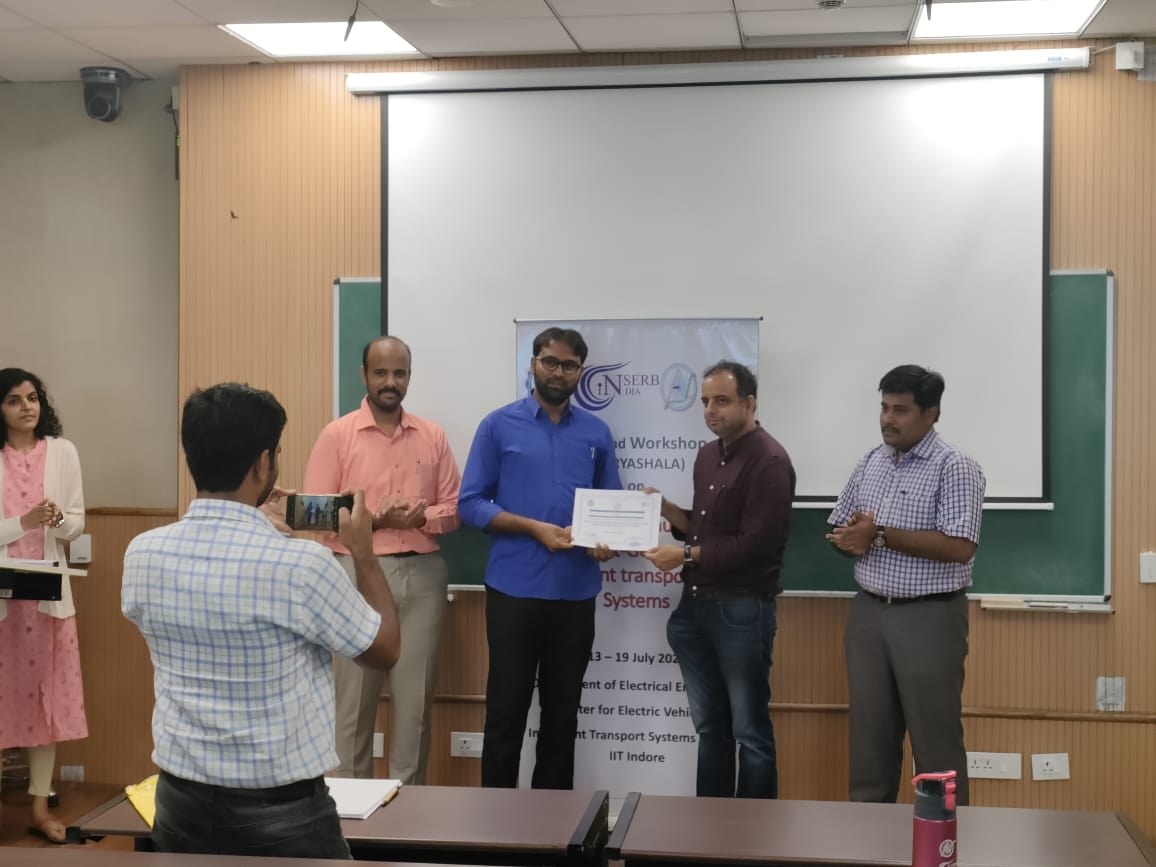
The students of SRM University-AP leave no stone unturned to expand their knowledge horizons and strengthen their research endeavours as they are trained to translate every single experience into lessons of learning fortifying their perpetual journey as researchers, teachers, or entrepreneurs. The university facilitates them to explore all possibilities of learning paving their way to becoming complete professionals. They are encouraged to partake in numerous activities such as seminars, conferences, and workshops happening within and outside the country.
It is a cause for pride to know that one of our PhD scholars, Mr Shaik Rajak from the Department of Electronics and Communication Engineering, working under the guidance of Dr Sunil Chinnadurai, has attended the prestigious Science and Engineering Research Board (SERB) funded High-end Workshop on Vehicular Communications for Next-Generation Intelligent Transportation Systems conducted at IIT Indore. Mr Rajak was one of the few participants who was invited to attend the workshop based on his merit and research publications out of 300+ applications received from all over the country.
The workshop deliberated upon the future of the transportation industry of the country. The present transportation infrastructure demands efficient intelligent transportation systems (ITS) because of the increasing population, traffic congestion, etc. Vehicular communication is a key enabler for the next-generation ITS applications such as platooning, remote vehicle monitoring, etc. The fundamentals of vehicular communication systems along with advanced coding techniques, modelling of vehicular channels, various radio access technologies for next-generation ITS, connected and automated vehicles, unmanned aerial vehicle (UAV) communication, ITS standardization activities, vehicular Internet-of-Things (IoT) networks, and advanced network security techniques specific to vehicular networks were discussed in the meeting.
The workshop immensely helped Mr Rajak to learn more about his research areas; the advancements in the field of intelligent transportation systems, the current challenges, and a few research directions to solve the existing problems. “I could meet with many speakers and participants from various IITs, NITs and other central universities and get involved in enriching discussions,” he said. “The hands-on sessions also gave a better perspective on the existing knowledge base” added Mr Rajak. The workshop augmented his research outlook on ITS, vehicular channels: its characterisation and modelling, advanced coding techniques in vehicular communications, and vehicular IoT networks in real-time scenarios. He marked his gratitude to SRM University-AP for granting him an opportunity to be part of the high-end workshop.
Continue reading →


